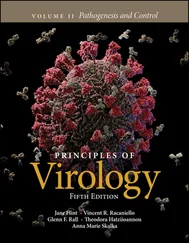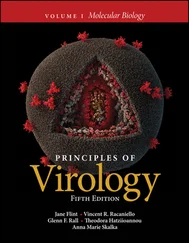Another important reason for using an animal model to study virus infection is that useful information can often be obtained with very defined and controlled experimental approaches. The ability of a virus to cause specific symptoms can be determined by careful control of the viral genotype and site of inoculation in the animal, followed by observation of the symptoms as they develop. The passage of a virus throughout the body during infection can be studied by dissection of specific organs, careful gross and microscopic observation, and simple measurement ( assay) of virus levels in those organs. The host response to infection can be determined (in part, at least) by measuring the animal's production of antibodies and other immune factors directed against the infecting virus.
Much information concerning the interaction between a virus and its animal host can be obtained by using a combination of sophisticated molecular analyses on animals with defined genetic properties. Some examples are outlined in Parts IIIand IV. For example, transcription of a portion of the HSV genome in latently infected neurons can be observed by use of sophisticated methods to detect viral RNA in tissue in situ. Methods for introduction, mutation, and inactivation of specific genes controlling one or another aspect of the immune response can be introduced into mice (and potentially other animals) using methods described in Part V. These and many other techniques provide detail and richness to the “picture” of the virus–host interaction, and all are required for a full understanding of the interaction between virus and cell and virus and host. However, the basic outline of the course of viral infection in animals can be obtained by using the most simple and readily applied experimental tools: observation, dissection, and measurement of virus.
The use and sacrifice of animals raise significant ethical questions, and the suffering caused must be thoroughly considered in the design of appropriate experimental protocols. For example, an experimental study that establishes important aspects of a disease may be too devastating to repeat as a casual laboratory exercise. Appropriate treatment of animals, limiting pain and suffering and maximizing comfort to the animal, is a practical as well as ethical requirement for animal study.
It is very important to realize that animal models, by their very nature, can only approximate the course and nature of the disease occurring in humans. In order to carry out a valid and reproducible scientific study, the mode of infection, the amount of infecting virus, the age and sex of the animal, its nutritional background, and many other factors must be carefully and reproducibly controlled. Thus, any experimental animal model for a human disease is a compromise with the real world. For example, the amounts of virus inoculated into the animal and the site of inoculation (e.g., mouth, eye, subcutaneous, or intracerebral) must be the same for all test subjects, a situation very different from the “real” world. Also, the model disease in the animal may well be different, in whole or in part, from the actual disease seen in a human population. Genetic makeup of the animal ( inbredor outbred, specific genetic markers present or absent), age, and sex of the infected host must be controlled to generate interpretable and reproducible results. Obviously, while certain diseases favor certain age groups, an infected population will evidence a wide range of variation in genetic and physical details.
Another complication is that the viral pathogen sometimes must be specifically adapted to the test animal. Virus directly isolated from an infected human may not cause disease in an animal unless it is first passaged in cells from that animal, or a mouse strain that is deficient in certain immune responses is used. In addition, safety considerations must be taken into account. Working with virus characterized by a very high mortality rate, such as Ebola virus, requires heroic and expensive precautions and containment facilities for study.
Despite very real problems with the use of animals to study virus‐caused disease, it often is the only way to proceed. Careful and accurate clinical observations of infected individuals, animals, or plants provide many details concerning the course of viral infection. But only in a complete plant or animal model can the full course of disease and recovery as a function of controlled variations of infection and physiological state of the host be studied. This is true even when many aspects of virus infection can be studied in cultured cells and with cloned fragments of the viral genome.
The animal models for viral disease described in this and later chapters demonstrate some of the methods, successes, and limitations involved in the use of animals. Despite the problems associated with working with experimental animals, key basic data could not have been and cannot be obtained any other way.
A mouse model for studying poxvirus infection and spread
Many of the models developed for the study of viral pathogenesis involve the use of mice. These animals have an excellent immune system, can be infected with many viruses adapted from human diseases, and are relatively inexpensive to use. Frank Fenner's studies on the pathogenesis of mousepox carried out in the 1950s provided what is still a classic model for experimental study of viral pathogenesis.
Although smallpox virus is extinct in the wild, the recent realization that smallpox has been extensively studied as a weapon, and fears that it may be in the possession of terrorists, bring these classic studies into sharp focus. Further, other animal poxviruses such as monkeypox can infect humans, and human encroachment of tropical habitats has led to significant occurrence of this disease in tropical Africa. Another poxvirus, myxoma virus, is endemic in rabbit populations in South America, and was used in a temporarily successful attempt to control the ecological threat posed by the high rate of rabbit multiplication in Australia. While touted at the time as an example of successful biological control, numerous complications occurred with its use. Thus, this “experiment” is a valuable example of the benefits and problems involved with biological control.
In Fenner's classic study of mousepox pathogenesis, virus was introduced by subcutaneous injection of the footpad, and virus yields in various organs, antibody titer, and rash were scored. As noted, the basic experiment thus required only careful dissection of the infected animal, measurement of virus titers, and careful observation, but provided a detailed picture of the virus’s pattern of spread within the animal. The patterns of virus spread and the occurrence of disease symptoms are illustrated in Figure 3.4.
Of course, the model is just that; it does not completely describe virus infection in the wild. An example of a significant deviation from one “natural” mode of infection is when poxvirus is transmitted as an aerosol, leading to primary infection in the lungs. This is a difficult infection route to standardize and is only rarely utilized. Also, examining experimental infection of animals in the laboratory ignores the dynamics of infection and the interactions between virus and the population. As a consequence, genetic changes in virus and the host, both of which are the result of the disease progressing in the wild, are ignored.

Figure 3.4The course of experimental poxvirus infection in laboratory mice. Virus is inoculated at day 0 in the footpad of each member of a large group of genetically equivalent mice. Mice are observed daily, and antibody titers in their serum are measured. Selected individuals are then killed, and various organ systems assayed for the appearance and presence of virus. Note that symptoms of the disease (rash and swollen foot) only become noticeable after a week.
Читать дальше













